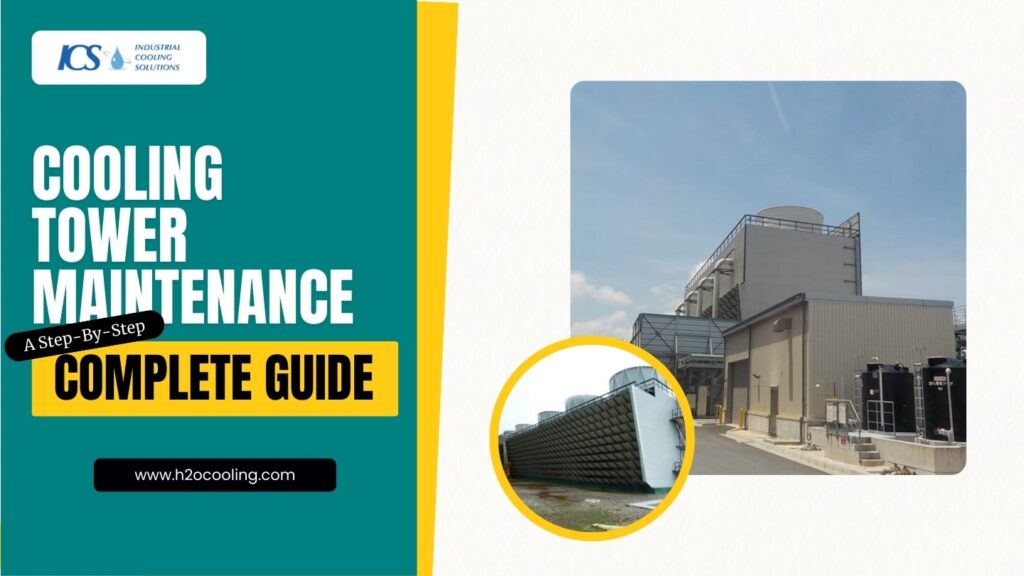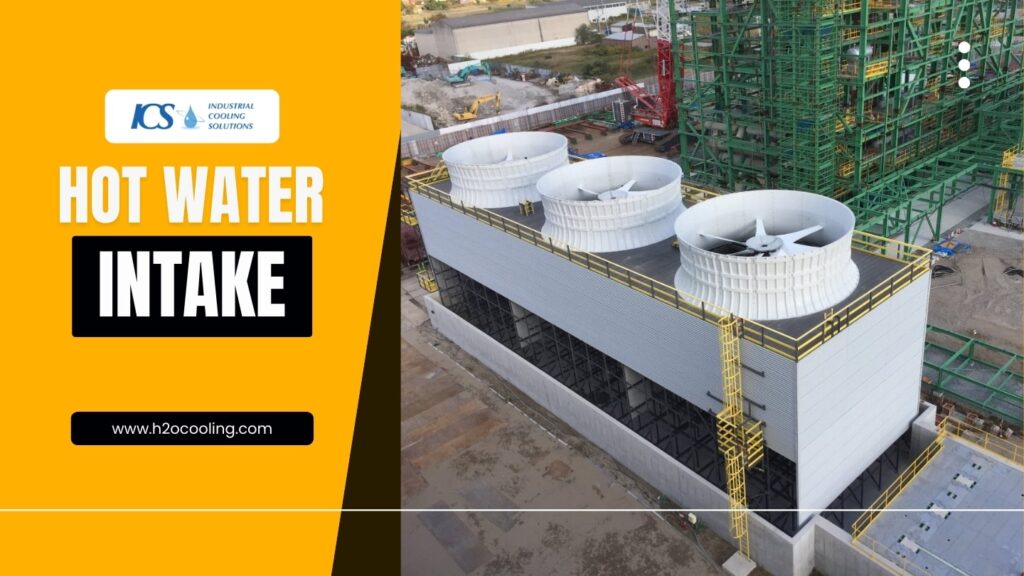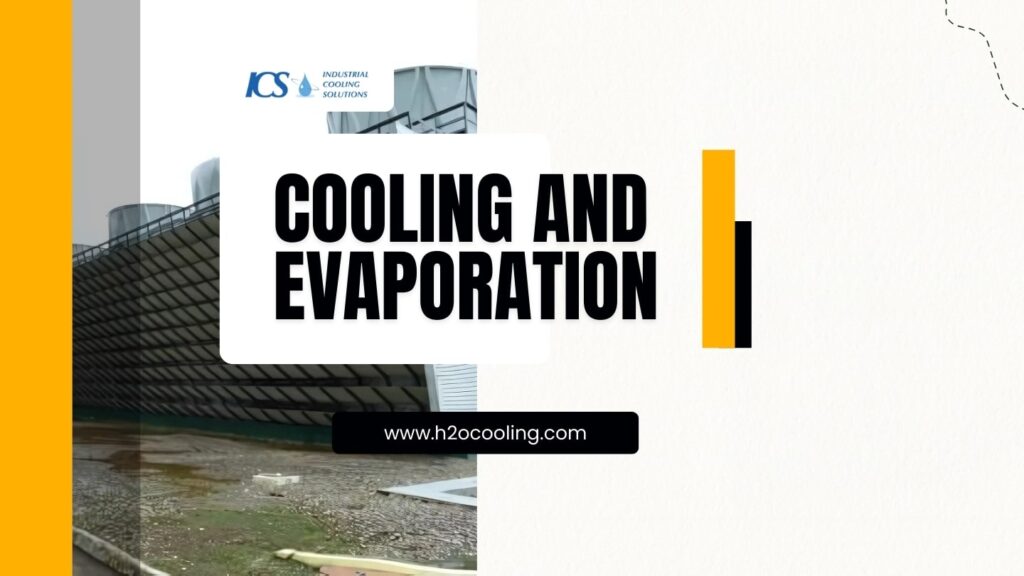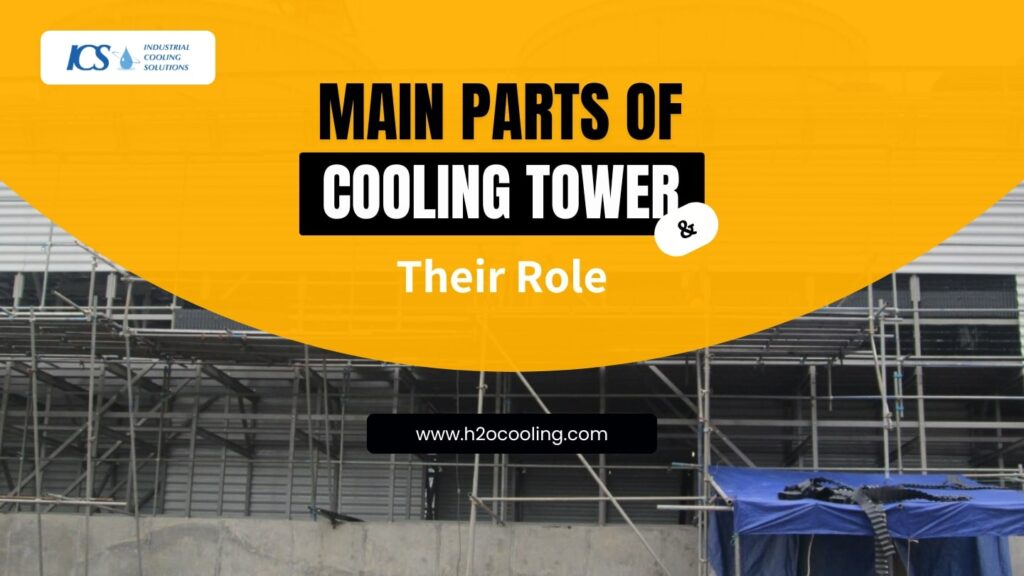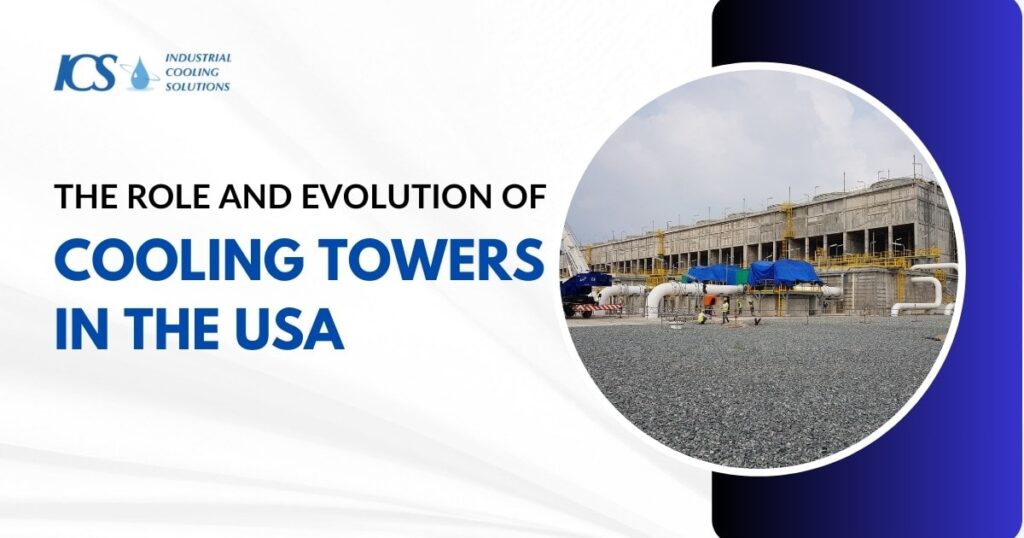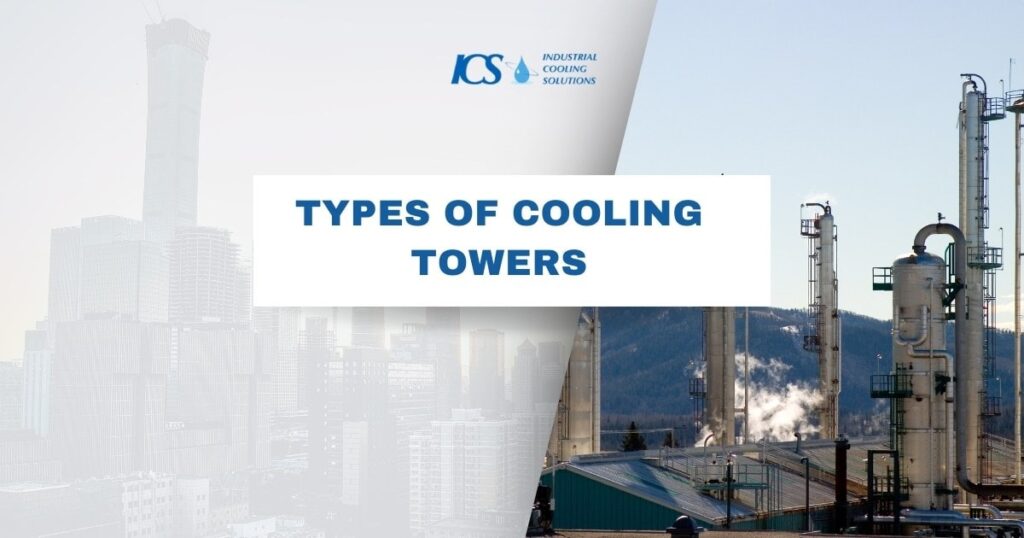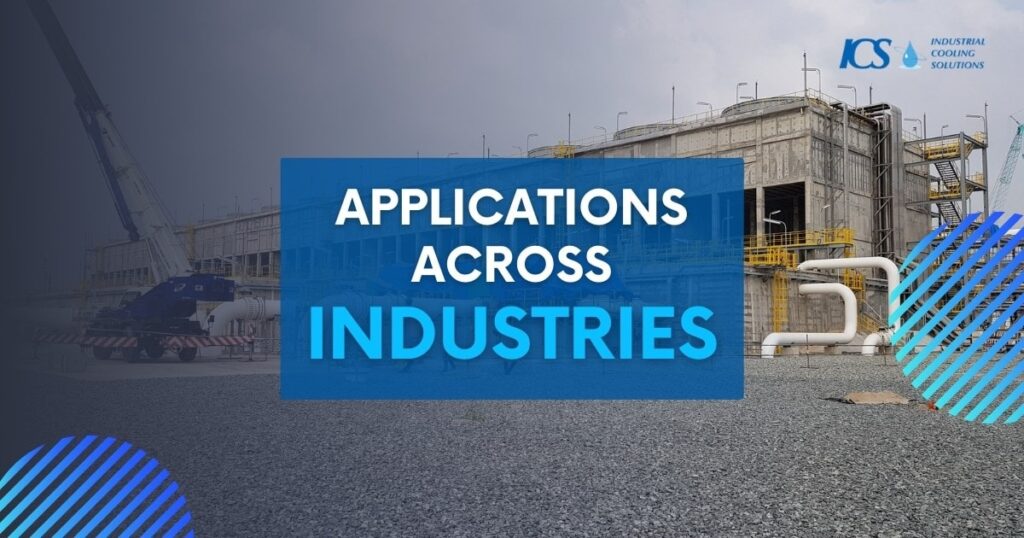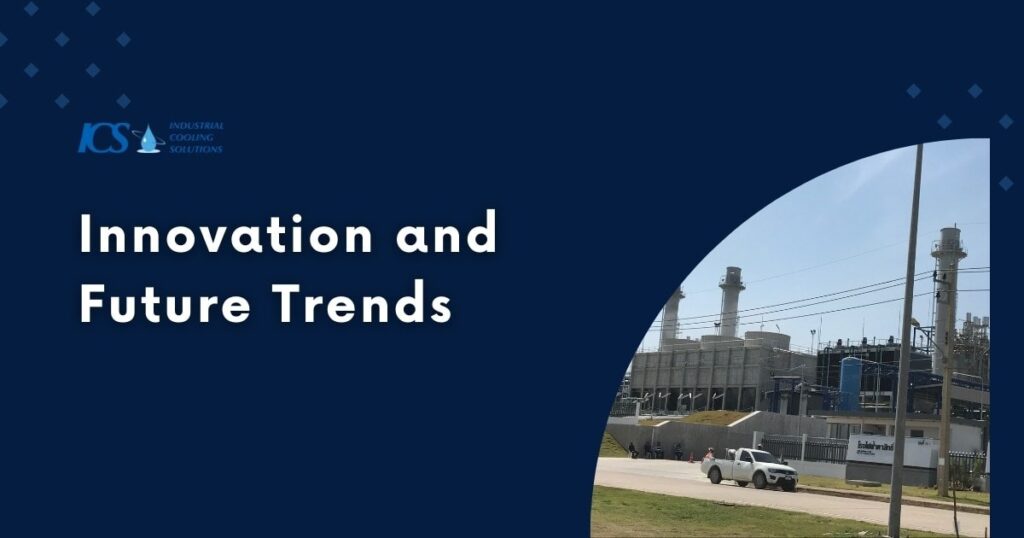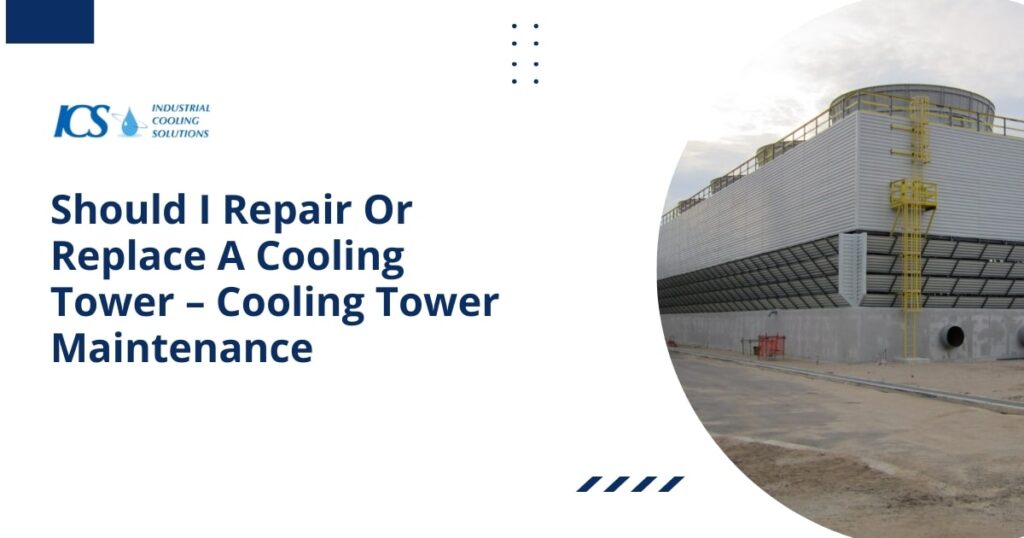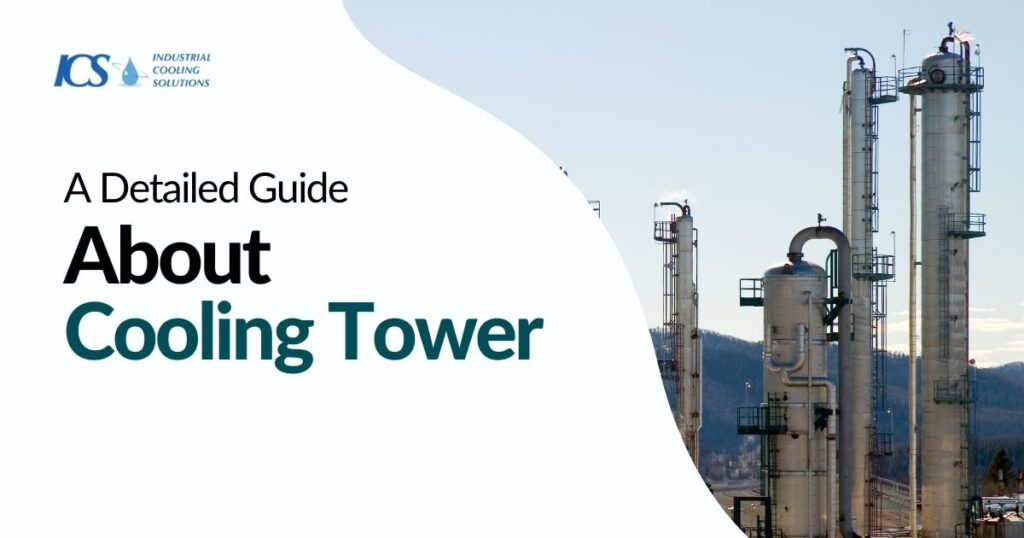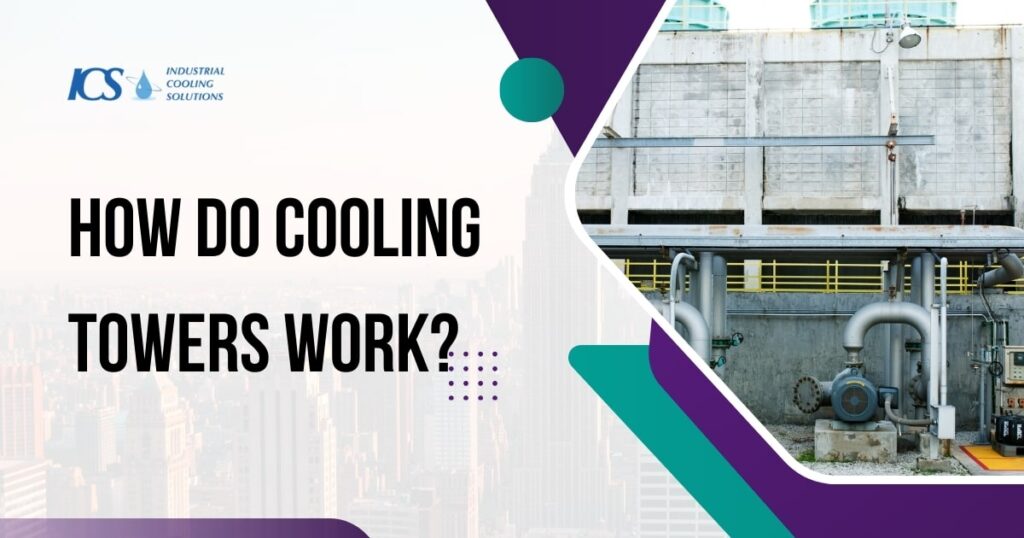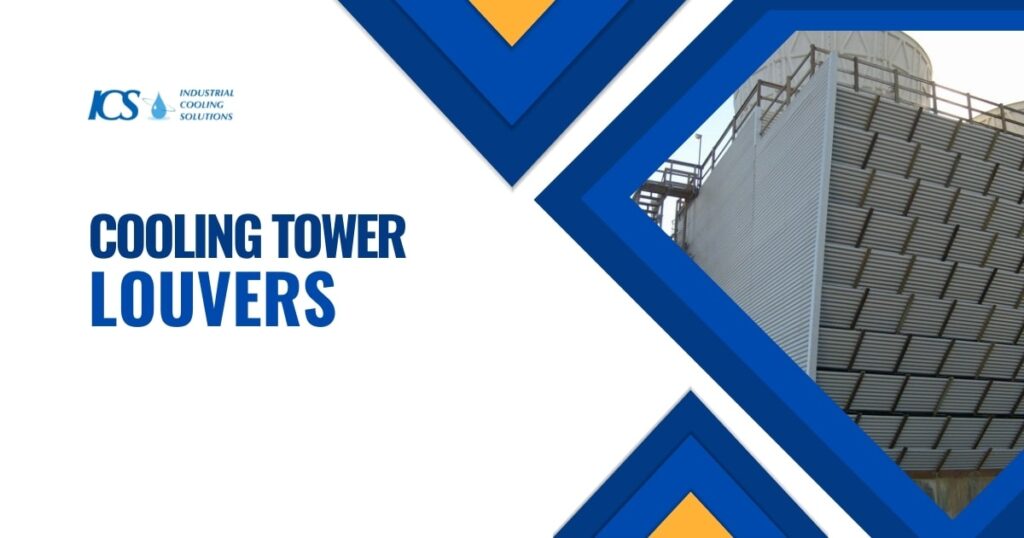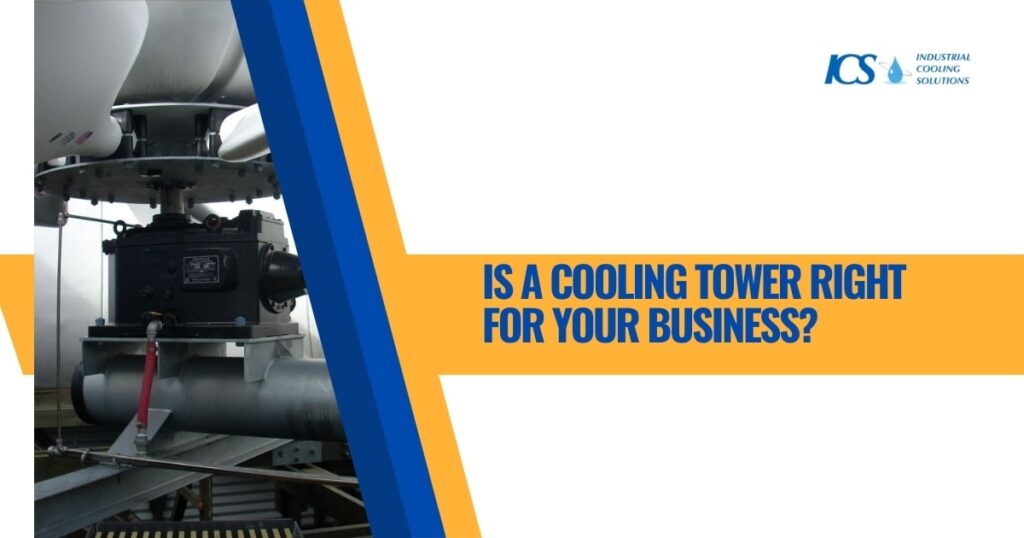In this age, no one can imagine living without Air conditioning and cooling towers, especially in the summer. Regular maintenance and upkeep are needed to ensure the cooling tower is working 24/7 without any interruption. In this blog, we will discuss the best cooling tower maintenance checklist considered a vital tool for cooling tower technicians or experts.
Why weekly or monthly monitoring or examination is recommended, what the result of ignoring regular maintenance will be, and what kind of safety precautions you should follow while cleaning and maintaining the cooling towers will be discussed in this article. Let’s start!
Table of Contents(Cooling Tower Maintenance)
Cooling Tower Routine Maintenance and Inspection
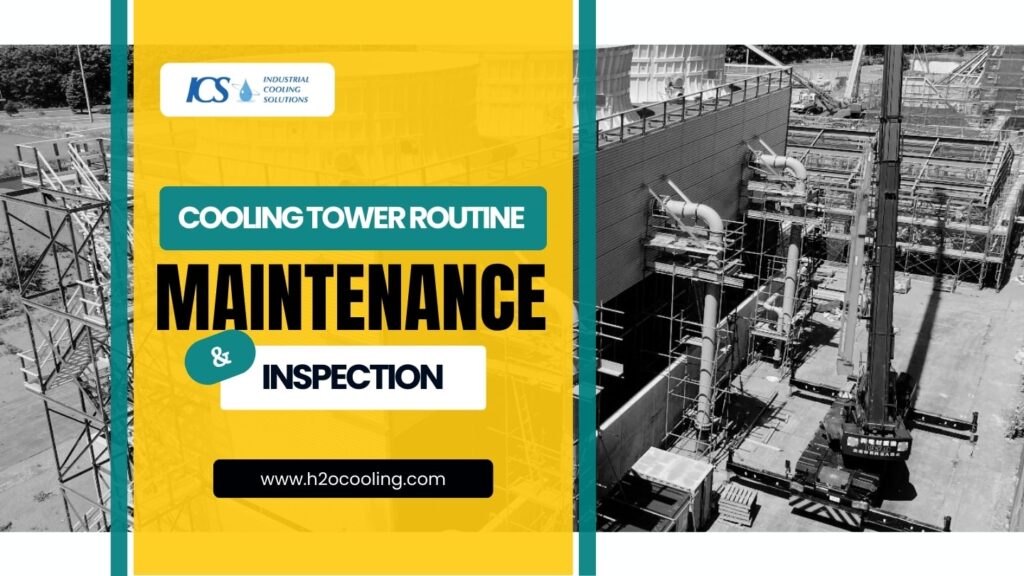
Experts in the fields recommend routine cooling tower cleaning and maintenance to avoid costly cooling tower component repair and replacements and maintain its cooling capacity. To make a systematic schedule to track how the cooling tower’s daily operations are preceding, divide the cooling system inspection into daily, weekly, monthly, and annual bases.
Weekly Maintenance
In order to keep the environment safe from the potentially harmful side effects of the cooling towers, thoroughly analyze the cooling tower traces and the water used. If there is any sign of legionella bacteria, the situation is alarming. Check the water quality and perform all the prevention techniques to ensure it functions correctly.
Also, analyze the water level, pressure gauge, engine noise level, fan operation speed, temperature range, and fan motor. and air/water flow rate for optimal performance. After careful inspection, follow the essential steps to solve any issue; if you’re doubting the troubleshooting, leave this maintenance to experts.
Monthly Inspection
When it comes to monthly maintenance or overall visual inspection, you need to observe the overall health and condition of the cooling tower casing and, most importantly, the clarity of the cold water tower basin. Check the lubrication of cooling tower components like fan motors or water distribution systems.
Generally, during monthly inspections, you must check fill material, filters, fan decks, ladders, walkways, gearboxes, drive shifts, and water testing. An ideal sump screen should be clean, and the cleanliness of sump water should be checked through these sump screens.
After checking the sump water clarity, it’s time to track the water level in the water basin and make the ideal adjustment if needed. After that, examine the condition of the control valves to see if there is any sign of corrosion.
Monitor the electricity consumption of cooling towers by fan motors and ensure a proper, consistent reading. Consuming more electricity or energy than usual is a sign of some technical fault, such as the engine’s reduced efficiency.
Annually Cleaning
Annual maintenance of the entire cooling tower system is critical for efficient working and longevity. First of all, check the structural integrity to see any sign of corrosion or scaling. Ensure the fill material and fan blades are in their best condition for efficient working; if not, replace them immediately.
Remove every kind of debris or microbial growth from the water to maintain its quality and treatment. Ensure no algae, dirt, or scaling is on the fill material for effective and continuous heat transfer. Thoroughly lubricates all the moving parts of the cooling towers to perform their assigned task without any hurdle or issue. Replace the drift eliminator and fan blades if they are not performing evaporative cooling efficiently.
Apart from repairing and replacing the components, the CTI standard compliance and ASHRAE (American Society of Heating, Refrigerating, and Air-Conditioning Engineers) must also be checked for preventive maintenance.
Cooling Tower Maintenance Checklist
Multiple essential components and steps should be part of your regular cooling tower maintenance checklist. Some of the crucial key points that most evaporative cooling towers use to maintain their cooling towers in the best condition are discussed here.
Structural and Mechanical Inspection
First, thoroughly inspect the cooling tower’s structural integrality and note any signs of wear and tear, such as visible leakage, excessive engine vibration, sudden high noise from machinery, water pipe cracks, clogging, and scale formation. Make sure its structural integrity and safety for longevity and make all the necessary adjustments to prevent it from corrosion and scale build-up.
Monitor Water Treatment and Quality
Check water quality, such as its pH, presence of bacteria, algae, and overall water chemistry for smooth and even distribution over fill media. Treated water with essential chemicals to improve its quality and ensure that they are perfectly dosed to hold water standards. For clean water, consistent maintenance and monitoring is vital.
Wash Cooling Tower Components to Avoid Blockage
Then, it comes to washing the cooling tower parts with standard cleaning agents to remove blockage and scale build-up from fill media, spray nozzles, drift eliminators, valves, and basins. Stopping bacterial growth and cleaning dust and debris is necessary to improve the system’s performance. Timely maintenance also helps to enhance the lifespan of the cooling tower components.
Address Heat Transfer Issues
Monitor heat exchange issues by profoundly examining the heat exchangers for efficient cooling. Proper airflow and heat exchange is critical for cooling towers to perform their essential functions correctly. Without weekly or monthly monitoring, fouling and scaling chances are high.
Benefits of Regular Cooling Tower Maintenance
Timely maintenance of cooling towers is critical for their best performance and to enhance their cooling capacity. After proper check, remove and replace all the problem-creating components that comprise the working and speed of the cooling tower. Here, we will discuss the top benefits of cooling tower maintenance and cleaning.
Improve Working Capacity: Clogging, mineral deposits, or debris are the most common reasons for reducing the heat transfer efficiency and minimizing the water flow. On the other hand, clogging or corrosion in these spray nozzles can also lead to poor water distribution on the fill media. So, regular maintenance and cleaning solve all these problems to improve the exchange, uninterrupted operations, and overall working capacity.
Early Addressing of Corrosion or Biological Growth: Weekly cooling tower maintenance and regular cleaning allow us to see any corrosion or biological buildup. Maintenance and timely disinfection help to kill harmful microorganisms and remove any kind of corrosion and scale deposits.
Efficient Heat Transfer for Maximum Cooling Capacity: High-quality water is needed for effective and maximum heat transfer and timely maintenance to ensure the pH of water. It also maintained the water distribution system to redistribute the water for smooth and even flow through ideal spray pattern over fill media.
Extend Lifespan of Cooling Tower Components: With time and continuous working, some cooling tower components need to be repaired to clean any dirt or grease to extend their lifespan. Proper maintenance removes the organic matter, debris, grease, corrosion, or scaling from tower parts to maximize performance.
Consequences of Ignoring Cooling Tower Maintenance
Ignoring and neglecting proper cooling tower maintenance can lead to severe problems that decrease its overall performance and cause serious damage to costly components or parts of the cooling tower. Preventive maintenance is far better than expensive repairs and replacement of cooling tower components such as drift eliminators, fill media, filters, fan motors, blades, motor pulleys, spray nozzles, etc. The most deadly consequences of neglecting regular cooling tower maintenance are as follows.
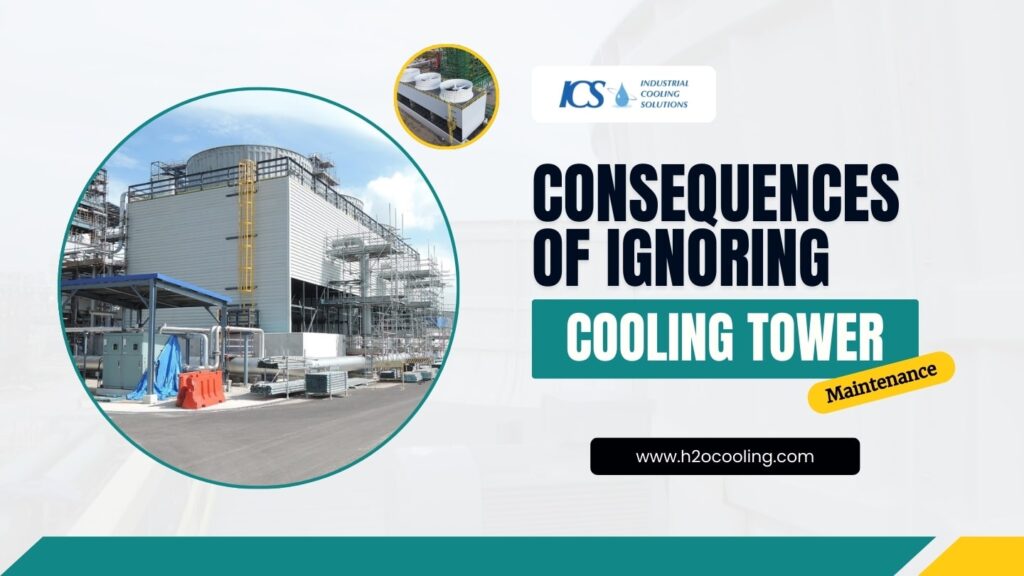
High Repair Costs: There is no doubt that essential cooling tower parts are costly, and without proper maintenance, there is a high chance of becoming less effective and needing wear and tear. If so, you must repair or completely replace them to achieve the desired cooling efficiency. To avoid high repair costs and costly breakdowns, make a proper maintenance schedule to thoroughly examine or leave cooling tower maintenance to industry experts for better results.
Increased Energy Costs: Cooling towers can operate inefficiently and consume more energy without proper upkeep and timely maintenance. Apart from colossal energy consumption, their efficiency also decreased. More energy consumption can ultimately lead to higher electricity bills that are an extra burden on your finances.
High Risk of Equipment Downtime: Not paying enough attention to the component’s maintenance and using cleaning agent can reduce their lifespans and increase downtime. Nozzles, fill media, distribution valves, motors, drift eliminators, fills, fan blades, and basins are the main components that need proper checkout and upkeep from time to time to work excellently.
Safety Concerns: As we already discussed, there is a high chance of growing harmful bacteria in the cooling tower’s water due to their ideal temperature and warm conditions. They are disease-causing microbes that can cause serious health issues for the operators and building occupants if left unchecked and maintenance tasks are not performed.
Additional Tips for Scheduling Maintenance
Instead of a traditional cooling tower maintenance checklist, here are some additional tips and schedule planning for effective and correct preventive maintenance to prevent costly repairs.
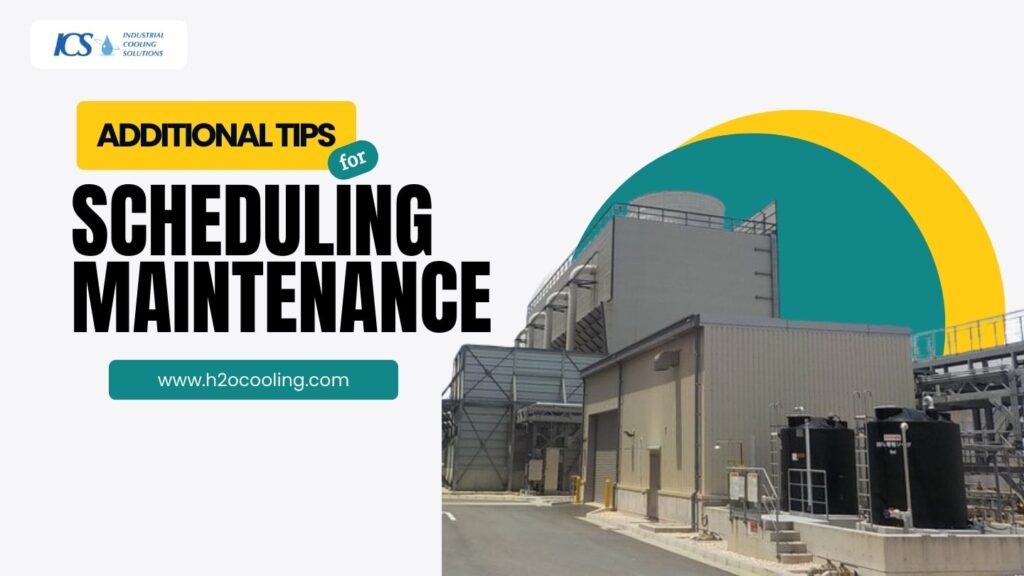
Plan a Regular Schedule:
Make a proper written scheduled plan to examine, analyze, and maintain your cooling towers to avoid interrupted pr delayed cooling tower operations. Making a plan and marking the performed tasks will help catch even minor issues before it’s too late to be repaired or replaced.
Assign Tasks to Experts:
Make clear-cut instructions about the different tasks and their responsibility. Assigned the maintenance chore to the cooling tower experts for maximum efficiency and timely troubleshooting.
Use Maintenance Software for High Efficiency:
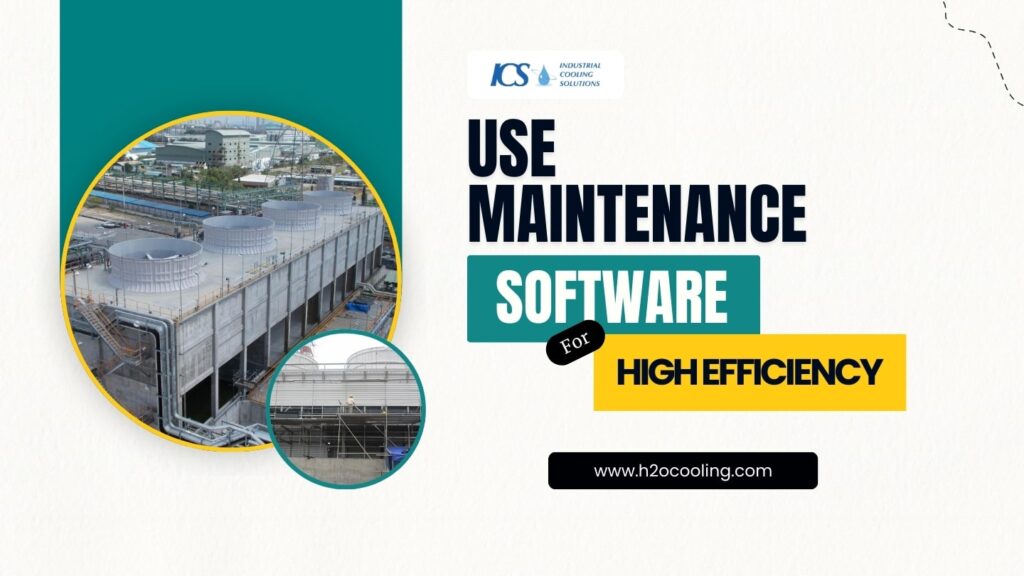
One of the best and latest methods to track cooling tower operations is using software or tools specifically designed to monitor schedules, operations assignments, and accomplished status. This advanced software helps to stay organized and seamless working on cooling towers.
Subdivide the Tasks based on Importance:
Based on urgency and importance, you can subdivide the maintenance tasks of the entire system to enhance your cooling towers’ overall operational efficiency and performance.
Follow Safety Precautions
Following safety precautions during cooling tower cleaning and maintenance is vital for workers’ health and the environment. You can clean and maintain the cooling tower parts by implementing safety guidelines without any hazards or risks.
- Disconnecting all the equipment before starting any maintenance will reduce the electrical shocks.
- Wear personal protective equipment, such as gloves, goggles, respirators, and coveralls, to protect yourself from chemicals, fumes, dust, or hazardous contaminations.
- Ventilate your working area by opening all windows and doors to improve airflow. Also, remember not to work alone inside the cooling tower. Always have a working partner in case of any emergency, accident, or immediate escape.
- Use scaffolding while working at heights and follow all the safety protocols.
- Always check the state safety regulations and guidelines as EPA.
- Ensure the use of non-slipped rugged mats to avoid falling on wet surfaces.
Hire Cooling Tower Experts for Effective Maintenance
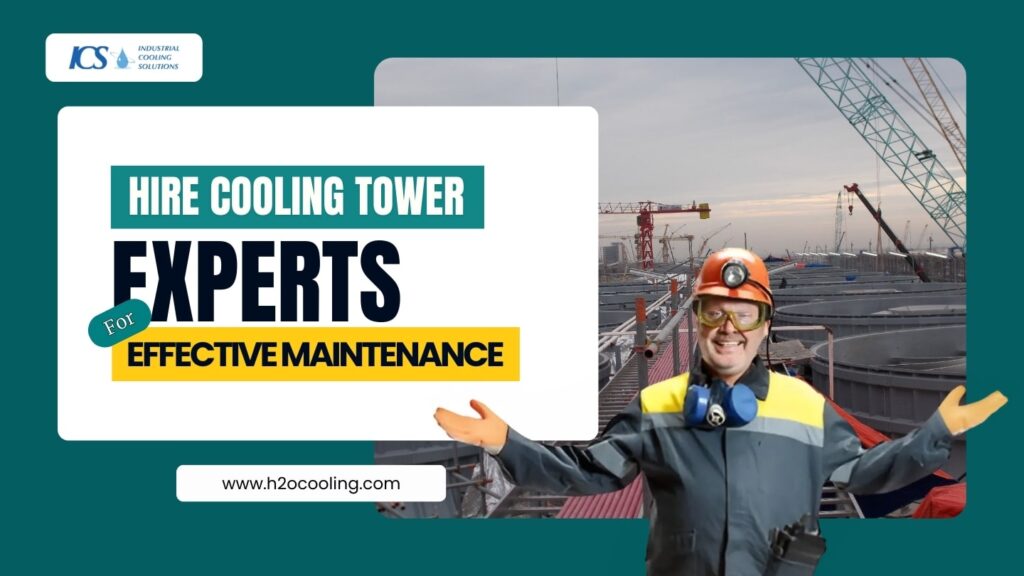
Preventive maintenance is critical for cooling systems, and as industry experts, we can understand its importance in uninterrupted and smooth cooling operations. You can get the optimum results with proper examination of water treatment, components repairs, and timely cleaning.
Whether your cooling tower needs components repair, air cools, upgrading, preventative maintenance, or new tower installations, our substantial cooling tower quality services are designed to perfectly address your demands and preferences. Contact us for premium services and book your maintenance appointment Now!
Conclusion
Cooling towers are integral to large commercial buildings and industries for cooling their environment and ensuring proper functioning under ideal conditions. To ensure your cooling tower and HVAC system are functioning correctly, it is mandatory to inspect the overall tower system. By regular cleaning and maintenance. it is possible to prevent any kind of sediment, clog, and impurities. In this detailed blog post, we have discussed the regular cooling tower maintenance checklist, maintenance benefits, possible consequences of neglect, safety precautions, and more. To hire a cooling tower expert for maintenance or buy cooling tower parts, visit our website.

